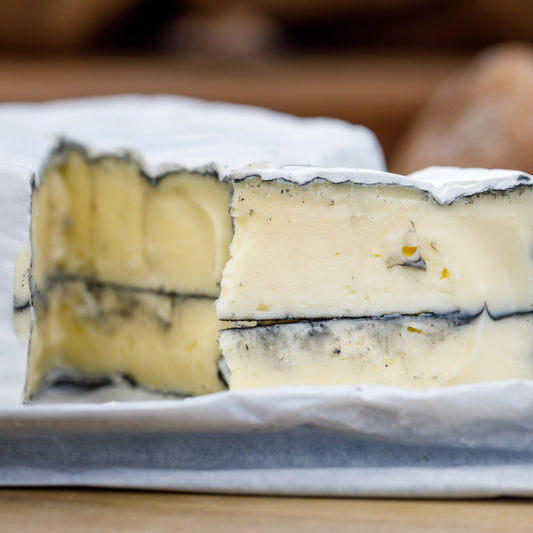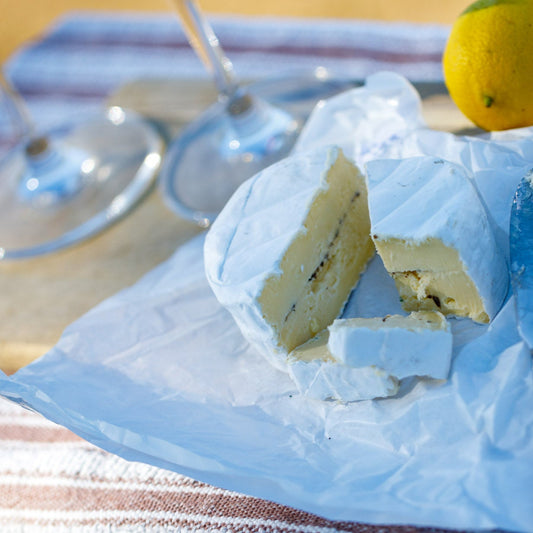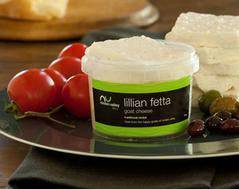
Pecorino Romano: The Essential Italian Cheese You Need to Know
Share
Pecorino Romano: The Essential Italian Cheese You Need to Know
Pecorino Romano is a cheese that embodies the rich culinary heritage of Italy. Known for its sharp, salty flavour, this cheese has been a staple in Italian kitchens for centuries. Whether grated over pasta or enjoyed on its own, Pecorino Romano adds a burst of flavour to any dish. In this blog post, we’ll explore what makes Pecorino Romano so special, how it’s made, and the best ways to enjoy it.

What is Pecorino Romano?
Pecorino Romano is a hard, salty Italian cheese made from sheep’s milk. The name "Pecorino" comes from "pecora," the Italian word for sheep. This cheese has been produced for over 2,000 years and remains one of the most popular cheeses in Italy and beyond. Its unique flavour comes from the specific breed of sheep used and the traditional methods of production.
Key Characteristics of Pecorino Romano:
- Sheep’s Milk: Made from 100% sheep’s milk, Pecorino Romano has a distinctive taste that sets it apart from cow’s milk cheeses.
- Sharp, Salty Flavour: The cheese is known for its robust, tangy flavour, which intensifies with age. It’s perfect for grating over pasta, soups, and salads.
- Hard Texture: Pecorino Romano has a hard, crumbly texture that makes it ideal for grating.
How is Pecorino Romano Made?
Pecorino Romano is produced using traditional methods that have been passed down through generations. The cheese is made from fresh sheep’s milk, which is heated and mixed with natural rennet to form curds. The curds are then pressed, salted, and aged for a minimum of eight months, although many are aged for up to a year or more to develop a more intense flavour.
Why Choose Pecorino Romano?
- Authentic Italian Flavour: Pecorino Romano offers a taste of Italy with its sharp, salty flavour and rich history.
- Versatile in the Kitchen: This cheese is incredibly versatile and can be used in a variety of dishes, from classic Italian pasta to modern culinary creations.
- High-Quality Ingredients: Pecorino Romano is made from high-quality sheep’s milk, ensuring a superior taste and texture.
How to Enjoy Pecorino Romano
Pecorino Romano can be used in countless ways to enhance your cooking:
- Grated: Grate Pecorino Romano over pasta, risotto, or soups for a burst of flavour.
- Shaved: Add shaved Pecorino Romano to salads or cheese boards for a touch of elegance.
- On Its Own: Enjoy Pecorino Romano with fresh fruit, nuts, and honey as part of a cheese platter.
- In Cooking: Use Pecorino Romano in traditional Italian recipes like Cacio e Pepe, or experiment with it in your favourite dishes.
Pecorino Romano vs. Parmigiano Reggiano
Many people wonder about the difference between Pecorino Romano and Parmigiano Reggiano. While both are hard, aged cheeses with intense flavours, they have distinct differences:
-
Milk Source: Pecorino Romano is made from sheep’s milk, while Parmigiano Reggiano is made from cow’s milk.
-
Flavour: Pecorino Romano is saltier and sharper, whereas Parmigiano Reggiano has a more nutty and subtle flavour.
-
Texture: Pecorino Romano is crumbly, making it perfect for grating, while Parmigiano Reggiano is slightly creamier.
Where to Buy Pecorino Romano
If you’re looking to buy authentic Pecorino Romano, Cheese Therapy offers a curated selection of the finest Pecorino Romano, including options from renowned producers like Pinna. Our Pecorino Romano is available in various sizes, from whole wheels to wedges, ensuring you have the perfect amount for any occasion.
It's Essential!
Pecorino Romano is more than just a cheese; it’s a culinary tradition that has stood the test of time. Whether you’re grating it over a bowl of pasta or enjoying it on a cheese board, Pecorino Romano adds a touch of authentic Italian flavour to any dish. Explore our selection of Pecorino Romano at Cheese Therapy and bring a piece of Italy into your kitchen today.


















